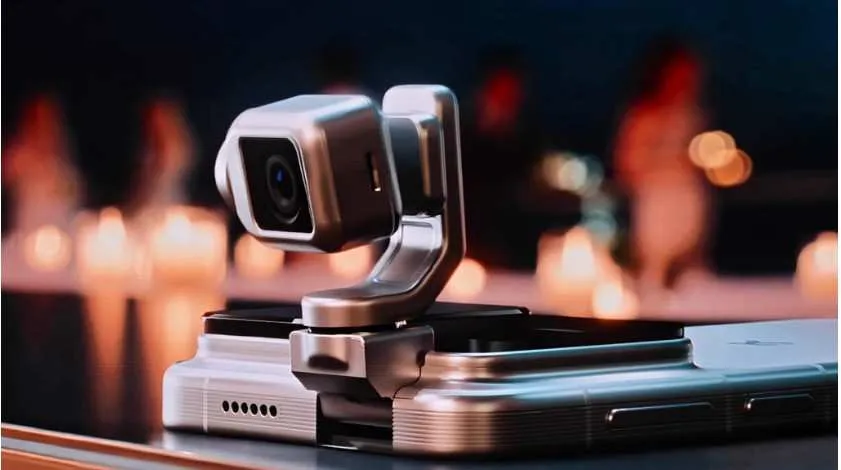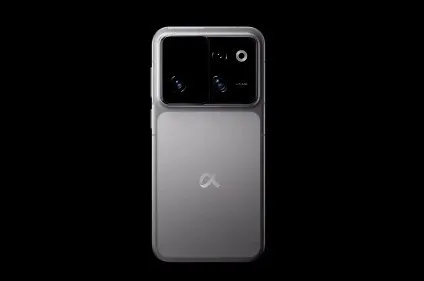In a world where smartphone design innovation seems to have reached its peak, Honor has shaken up the industry once again. The company has unveiled a revolutionary smartphone featuring a fold-out robotic camera arm, a design that blends robotics, AI, and creative functionality into one cutting-edge device. This marks one of the most ambitious steps forward in mobile photography, and a glimpse of where the future might be headed.

Table of Contents
A Game-Changing Reveal for Smartphone Photography
At a recent international tech showcase, Honor introduced its new concept smartphone, a device that literally moves to capture the perfect shot. The fold-out robotic camera arm extends from the phone’s chassis, allowing it to reposition itself automatically, giving users full freedom to shoot from angles that would normally require a gimbal or tripod.
Unlike typical pop-up or rotating cameras, this system uses motorized precision engineering to move smoothly in multiple directions. It’s not just a camera – it’s a robotic assistant built right into your phone.

How the Fold-Out Robotic Camera Arm Works
According to early demonstrations, the robotic camera arm can extend outward, tilt, and rotate, adjusting dynamically to the user’s needs. It’s powered by AI motion tracking and scene recognition, which allows it to follow faces or objects in motion automatically.
For example, during video recording, the camera can track a moving subject without requiring the user to move the device. In photography mode, it can adjust its angle for more dramatic shots – such as overhead views, ultra-low perspectives, or stabilized close-ups.
Honor has reportedly built the mechanism with lightweight aerospace materials, balancing durability with fluid motion. Despite the complexity, the fold-out system folds neatly back into the phone’s body, maintaining a sleek design when not in use.
Technical Highlights and Spec Expectations
While full specifications haven’t been released yet, industry insiders expect this model to feature:
- A 200MP main sensor with AI enhancement and multi-axis stabilization
- 4K/8K video recording with dynamic focus tracking
- Snapdragon 8 Gen 4 processor for faster image processing
- 6.9-inch AMOLED display with adaptive refresh rate
- 5000mAh battery optimized to handle motor functions efficiently
- MagicOS 9 is based on Android 15
Honor’s engineers have emphasized that the robotic arm’s power consumption is minimal thanks to advanced efficiency control.

Why This Innovation Matters
Mobile photography has always been limited by static hardware. With this fold-out design, Honor is pushing toward adaptive hardware, a device that literally moves with the scene.
For vloggers, content creators, and filmmakers, the possibilities are huge. Imagine recording hands-free cinematic shots or auto-framed interviews without external gear. The robotic arm can potentially act as a built-in cameraman, adjusting angles and focus as needed.
This could be the next logical step after AI photography – AI-driven mechanics, where software and hardware evolve together.
Experience Photography Like Never Before
The Honor Robotic Camera Arm Smartphone takes creativity to the next level. Its fold-out robotic arm automatically adjusts angles, tracks faces, and follows moving subjects – helping you capture perfect shots without needing tripods or manual adjustments. Whether you’re taking portraits, vlogs, or cinematic videos, this phone gives you smooth, hands-free shooting with AI-powered precision. Simply frame your moment, and let the camera move for you.

Standing Out in a Competitive Field
Smartphone manufacturers have been exploring creative camera mechanisms for years. Samsung’s Galaxy Z Fold series focuses on foldable screens, Xiaomi experimented with rotating modules, and Oppo introduced periscope lenses. But Honor’s robotic arm goes a step further, combining mechanical articulation with intelligent automation.
If successful, it could redefine expectations for flagship phone design and reintroduce genuine innovation into an increasingly predictable market.
Challenges Ahead
Of course, any moving part brings durability concerns. Dust resistance, waterproofing, and long-term motor reliability will be key to user trust. Repairability could also pose challenges if the robotic mechanism malfunctions.
Battery life is another consideration – though Honor claims the robotic system draws very little power, real-world performance will tell the full story once the phone reaches consumers.

Market Expectations and Release Outlook
While Honor has not confirmed a release date, tech insiders suggest a limited concept launch in early 2026, possibly followed by a global flagship rollout later in the year. The estimated retail price could start around $1,199, placing it alongside premium models from Samsung and Apple.
Given Honor’s growing presence in Europe and Asia, this device could also mark a stronger push into the U.S. market, where design-driven innovation often captures mainstream attention.
Quick Specs Snapshot
| Feature | Details (Expected) |
|---|---|
| Model Name | Honor Robotic Camera Arm Smartphone (Concept 2026) |
| Camera System | Fold-out robotic arm with 200MP AI main sensor |
| Video Recording | Up to 8K with auto motion tracking |
| Processor | Snapdragon 8 Gen 4 |
| Display | 6.9-inch AMOLED, 120Hz adaptive refresh |
| Operating System | MagicOS 9 (based on Android 15) |
| Battery | 5000mAh with optimized motor power control |
| Build Material | Lightweight aerospace-grade aluminum |
| Special Features | AI object tracking, cinematic auto-framing, and a self-moving camera arm |
| Expected Launch | Early 2026 (concept → global release) |
| Estimated Price | AI object tracking, cinematic auto-framing, and self-moving camera arm |
The Future of Mobile Design
The Honor robotic camera arm smartphone might represent more than a single product innovation – it hints at a new design direction where smartphones become dynamic tools rather than static slabs. As AI and robotics continue to merge, future devices could feature self-adjusting displays, modular parts, or adaptive bodies that physically change shape to suit user needs.
Honor’s bold concept is not just about better selfies or videos; it’s a preview of the next era of human-device interaction – one where your phone doesn’t just capture your world but moves with it.

Final Thoughts
The tech world has seen countless “innovative” claims, but Honor’s robotic camera arm stands out for its creativity and engineering depth. It’s a daring experiment that could reshape how we think about smartphone photography.
If Honor can deliver on reliability and practicality, this could be remembered as the year smartphones learned to move.





